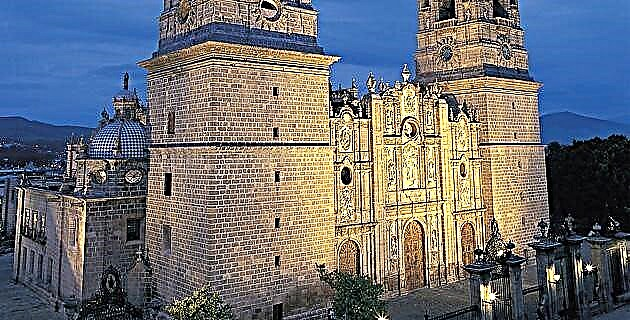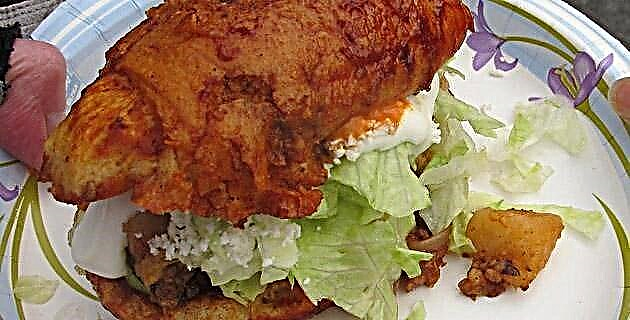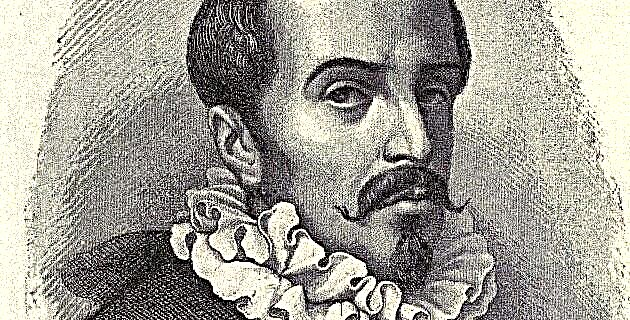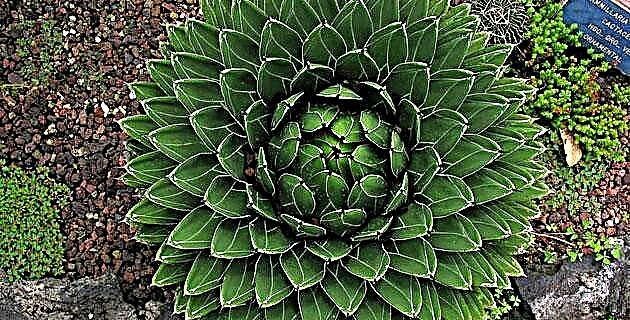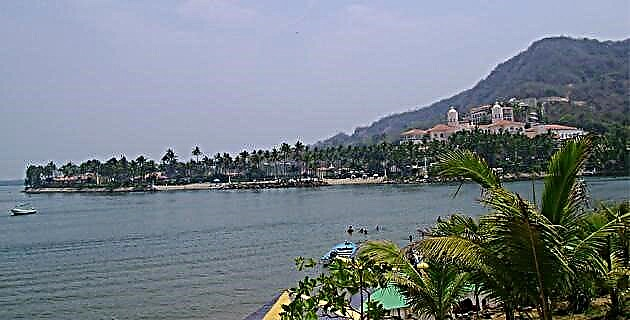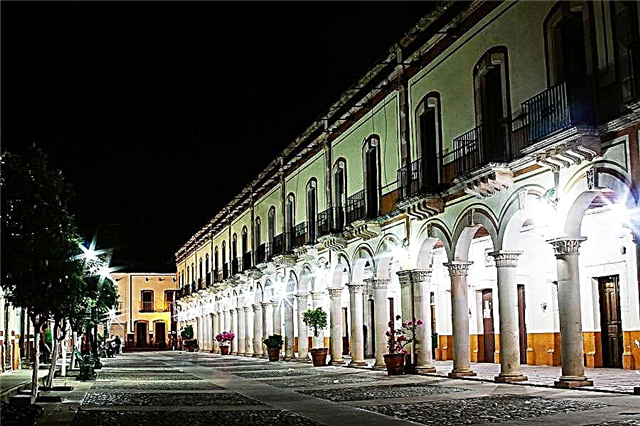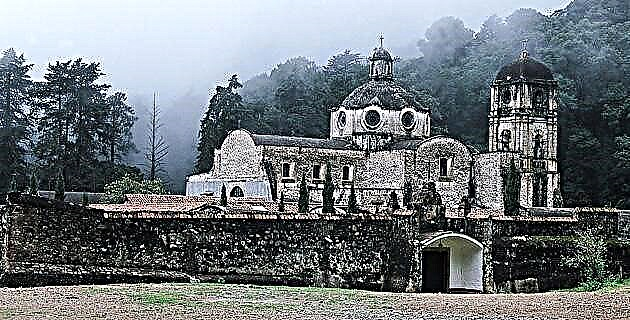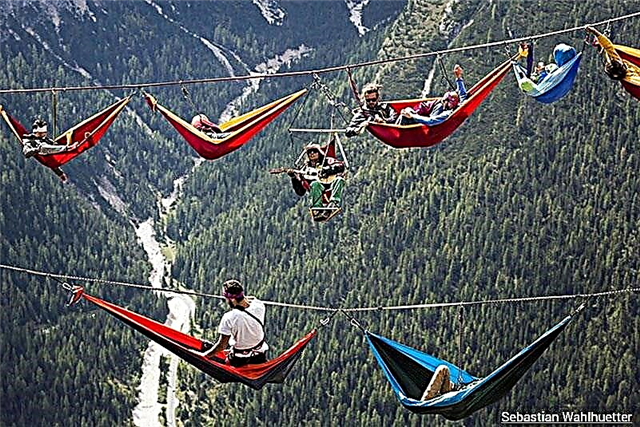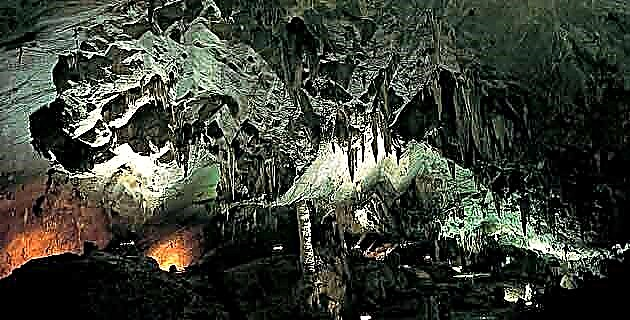
Coconá, in Tabasco, is basically a unique gallery of landscapes. Get to know it!
THE DISCOVERY OF THE COCONÁ GRUTES
With weapons ready to fire, two men run through the jungle. The frantic barking of hunting dogs is an unmistakable sign that they have found prey and are on its trail. Could it be one of the jaguars that abound in the area? They wonder. Suddenly the barks lose intensity and are heard as an echo. Intrigued, the brothers Romulo and Laureano Calzada Casanova they make their way through the thicket until they run into, in amazement, with the entrance of an imposing cavern. It is a day in 1876 and the Coconá cave has just been discovered. Words more, words less, this is the story of the discovery of one of the most beautiful caves in Tabasco: Coconá.
Willing to know this wonder we travel to Teapa and before an hour we are in the Grutas del Cerro Coconá Natural Monument, Parador surrounded by tropical vegetation with palapas, playgrounds, grills, parking and a restaurant, which in 1988 was declared a protected natural area.
Several young men in green shirts offer themselves as guides to the visitors who flock to the cave. According to the administrator, Coconá attracts between 1,000 and 1,200 people a month, of which 10% are foreigners.
We pay the entrance fee and our journey to the bowels of the Earth begins in a gallery decorated with splendid formations. A large number of stalactites hang from the ceiling, there are so many that we have the sensation of entering the jaws of a gigantic crocodile.
The story goes that the first man to explore Coconá was the outstanding Tabasco scientist and naturalist José Narciso Rovirosa Andrade, who organized an expedition on July 20, 1892 with a group of students from the Juárez Institute. This exploration took four hours and a length of 492 m was attributed to the cavity divided into eight very spectacular rooms due to their rich formations, which they named: "Hall of the Ghosts", "Manuel Villada Hall", "Ghiesbreght Hall", “Salón Mariano Bárcena” and “Salón de las Palmas”.
THE CAVES TODAY
The guide, Juan Carlos Castellanos, shows us the extraordinary figures that line the ground. First there is the monk, then the iguana, the wisdom tooth, the King Kong family, the banana bunch and the frog, among others, until you reach a magnificent set of columns and stalagmites that in the glare of the reflectors and the Natural light that enters through a recess in the vault takes on a fantastic appearance and at the same time gloomy and mysterious. They are the formations that give its name to the first room, that of the Ghosts.
In this place the temperature is pleasant. This is due to the conditions of the cave and the climate of the region, which is rainy and cool most of the year. From now on, the darkness grows more intense; in fact, it is total, and if it were not for the reflectors we would be plunged into darkness.
In the "Submerged Cathedral" we see waterfalls, curtains and stone columns that give the site a supernatural character. Juan Carlos shows us the mouth of a lion, the headless hen, the marimba and the weeping rock, capricious figures that share space with others of admirable size and constitution, such as the pumpkin, a mass of calcareous sedimentation described by Rovirosa as “a a true wonder ”, at the foot of which is the fountain of youth, a pool overflowing with crystalline water to which rejuvenating powers are attributed.
On the tour I am accompanied by my wife Laura and my daughter Barbara, who at 9 years old already wants to become a geologist "to know how the cave was made." Everything that surrounds us: the opulent formations, the galleries and cavities are the work of water and time, a subtle combination that has created the most extraordinary landscapes underground. Each figure, from the smallest to the large ones, tells us about a history of centuries and millennia of patient work.
So it is unfortunate to see that some formations are broken. They are the legacy of the visitors who came to Coconá in the first decades of the 20th century, when the cave lacked surveillance. Fortunately, since 1967, when the municipal authorities and the poet Carlos Pellicer Cámara managed the construction of walkways and their electrification, the cavern has been under control.
The gallery narrows and we enter the "Mysterious Corridor." "They are going to feel hot here," Juan Carlos tells us, and he is right. We begin to sweat profusely as we go down a winding and narrow corridor, but the spectacle we see is fascinating, especially the stalactites, the crocodile that comes down, the pejelagarto and a splendid 3.5 m high column called the giant carrot.
Several reflectors are out of order and few illuminate, so some areas of the cave are dark; but far from being frightened, the visitors experience greater emotion; yes, aided with hand lamps. I, for my good luck, carry a flashlight.
Although Coconá is a small cavity, it brings together the beauty, mystery and lavishness that other giant caves do not have. Proof of this is the Cenote de los Peces Ciegos, an impressive 25 m diameter flooded well that in the light of the reflectors and seen from a small balcony seems unfathomable, but today we know, thanks to the speleonauts, that its depth is 35 m and cave fish inhabit it.
Once again the gallery gains in amplitude and in the "Hall of the Wind" the shark's head, the turkey leg, the profile of an Indian and the headless woman, without hands or feet, are enhanced in a dramatic play of lights and shadows. We are surprised to learn that mammoth bones were unearthed at this site in 1979 during excavation work. How did they get here? How old is it? Undoubtedly, there are still many secrets to discover under the vaults of Coconá.
In the heart of the mountain the cavern acquires colossal proportions and the "Great Vault" is its greatest exponent. Measuring 115 m long, 26 wide and 25 high, we were dazzled by its magnificence. The tormented relief of the vault, its vigorous concretion and the variety of shapes and colors that calcite adopts make up a grandiose and imposing spectacle.
We pass the "Tower of Babel" and the finger asking for raid, and Juan Carlos takes us to the viewpoint where he proudly shows us the jewel of this underground cathedral: the face of Christ, an exceptional work attributed to nature. , but that manifests the intervention of a skilled anonymous sculptor.
To end our adventure we cross the bridge of the penultimate room, which for many is the most beautiful of all because of the columns and formidable stalactites that rise on the shore of a lake. At this point, after swimming across and exploring a small room, the engineer Rovirosa and his students started back. No one better than him to say goodbye: “With the satisfaction of bringing a successful recognition to an end, not always without its dangers, we regret leaving behind the marvelous wonders hidden in the solid crust of the planet; but at the same time we are happy to have known the most remarkable and sumptuous work of nature, in the picturesque Valley of Teapa ”.
NATURAL ATTRACTIONS OF TEAPA
In Teapa, contact with nature is permanent; the rivers Puyacatengo and Teapa offer multiple inns and spas framed by jungle mountain ranges; The Sierra State Park is a virgin territory for hikers, and its Coconá, Las Canicas and Los Gigantes caves are an invitation to discover the underground adventure; the Chapingo botanical gardens and the San Ramón farm are a treasure for lovers of tropical flora; the sulphurous hot springs of the El Azufre spa, famous for their healing properties, provide relaxation and relief, and if it is about historical and cultural sites, the Franciscan temple of Santiago Apóstol, dating from the 18th century; the Jesuit temple of Tecomajiaca, which honors the Virgin of Guadalupe; and the small hermitage of Esquipulas, built in 1780, are part of how much this attractive municipality offers to the visitor.
IF YOU GO TO COCONÁ
Leaving Villahermosa, take federal highway no. 195 towards the city of Teapa. Once there, follow the state highway that leads to Grutas del Cerro Coconá Natural Monument.
Try to bring cool clothes, tennis shoes and a flashlight.

